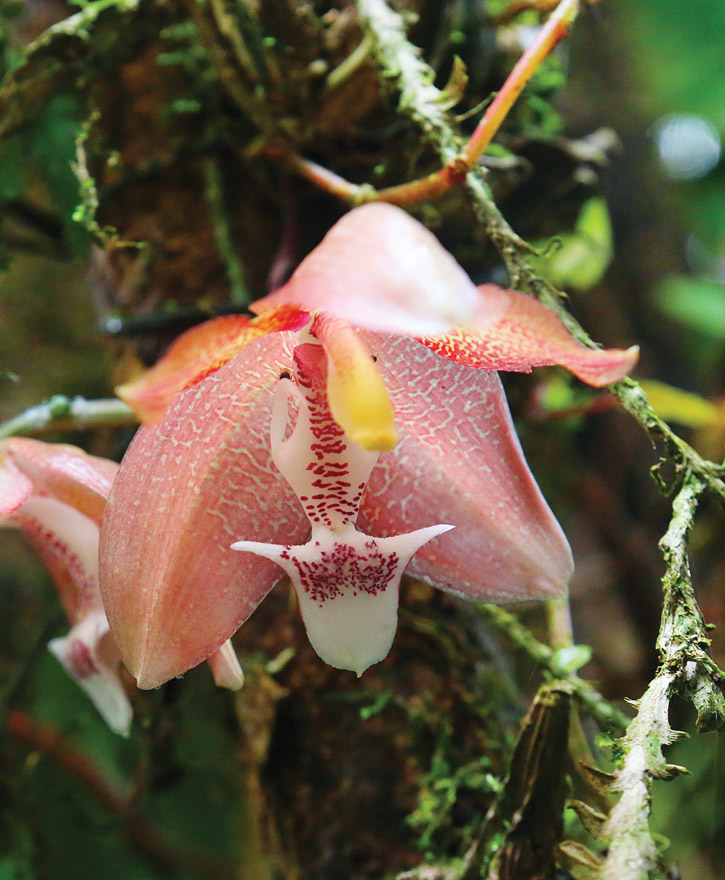It’s appropriate that the orchid is the national flower of Costa Rica: The country has more than 1,400 identified species. Countless others await discovery. At any time of year you’re sure to find dozens of species in bloom, from sea level to the highest subfreezing reaches of Chirripó. There is no best time for viewing orchids, although the beginning of both the dry season (May) and the wet season (Dec.) are said to be particularly favorable. Orchid lovers should head for the cloud forests; there the greatest diversity exists in humid mid-elevation environments where they are abundant as epiphytes (constituting 88 percent of orchid species).

Houlletia tigrina. Photo © Christopher P. Baker.
Orchid lovers should head for the cloud forests; there the greatest diversity exists in humid mid-elevation environments.Orchids are not only the largest family of flowering plants, they’re also the most diverse—poke around with magnifying glass in hand and you’ll come across species with flowers less than one millimeter (four-hundredths of an inch) across. Others, like the native Phragmipedium caudatum, have pendulant petals that can reach more than half a meter (20 inches). Some flower for only one day; others last several weeks.Orchids have evolved a remarkable array of ingenious pollination techniques. Some species attract insects by sexual impersonation. One species, for example, produces a flower that closely resembles the form of a female wasp—complete with eyes, antennae, and wings. It even gives off the odor of a female wasp in mating condition. Male wasps, deceived, attempt to copulate with it. In their vigor, they deposit pollen within the orchid flower and immediately afterward receive a fresh batch to carry to the next false female. Male bees and other insects are known to use the pollen of orchids as a perfume to attract females.
Guile seems to be the forte of orchids. One species drugs its visitors. Bees clamber into its throat and sip a nectar so intoxicating that they become inebriated, lose their footing, and slip into a small bucket. Escape is offered up a spout—the proverbial light at the end of the tunnel. As the drunken insect totters up, it has to wriggle beneath an overhanging rod, which showers its back with pollen.
An annual orchid show is held each March at Instituto Nacional de Biodiversidad (INBio), near San José. Gardens dedicated to orchids include the Botanical Orchid Garden (La Garita, tel. 506/2487-8095, 8:30am-4:30pm Tues.-Sun., adults $12, children $6) and Jardín de la Guaríoa (Palmares, tel. 506/2452-0091, 7am-6pm daily May-June, $4).
Excerpted from the Tenth Edition of Moon Costa Rica.